This is a traditional Scandinavian recipe for gravlox, or gravlax, a dill-cured salmon. This way of curing salmon is used in Sweden, Finland, and Scandinavia. The salmon is seasoned with pepper and dill, a traditional Nordic spice.
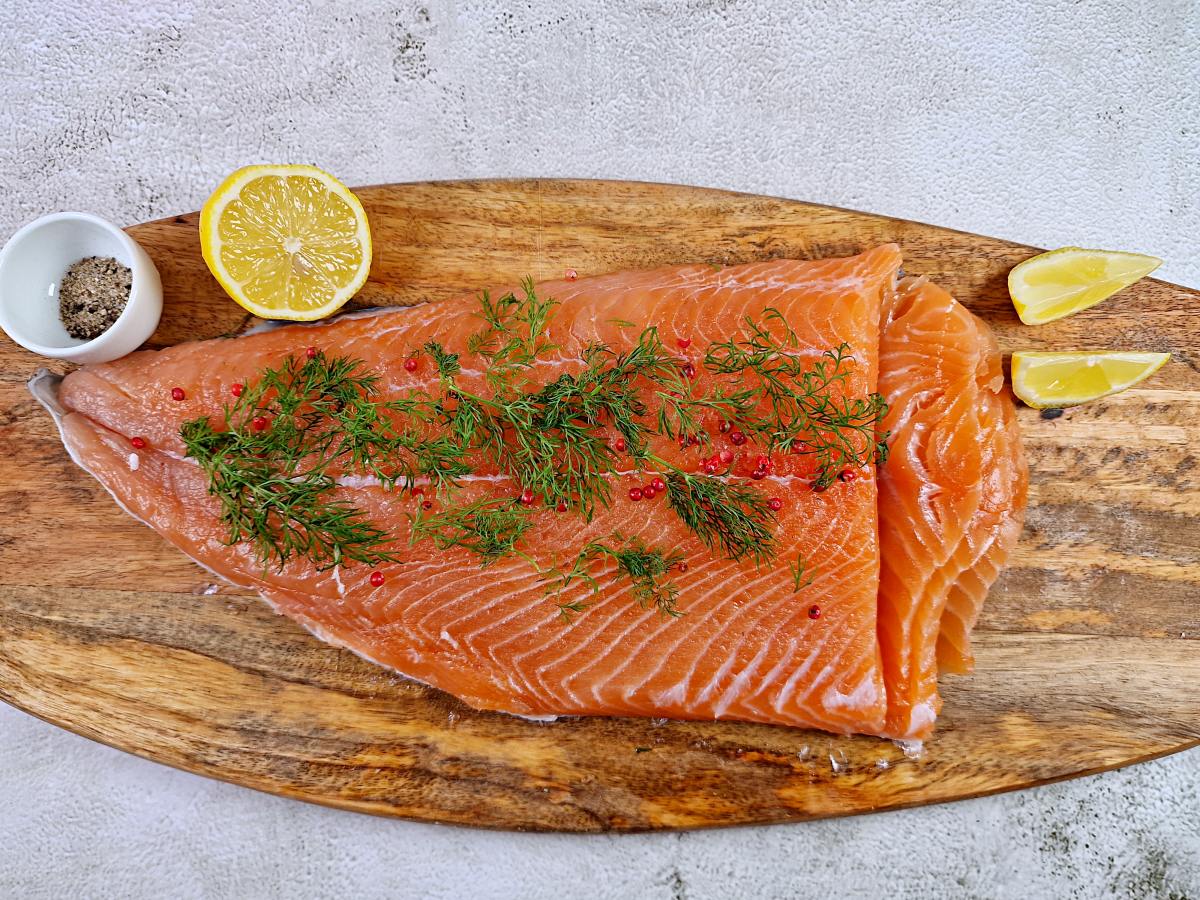
Why you will love this recipe
- Taste: The taste of gravlox is a tender, slightly sweet, salty salmon with a rich and complex flavor that many people find absolutely delicious.
- Health benefits: Salmon is rich in omega-3 fatty acids. Cured salmon can also be a good source of protein.
- Versatile: Gravlax can be served in various ways, from simply slicing it thinly and serving it on toast or rye bread to using it as a topping for salads or eating it with potatoes.
What is gravlax?
Cured salmon is a fresh, raw salmon fillet that is preserved with salt, sugar, and spices to keep it for longer. Cured salmon is also called lox, belly lox, gravlax. In Swedish and Norwegian, it is gravlax; in Finnish graavilohi, Danish call it gravet laks.
Salmon can also be smoke-cured; this means the raw, salted file is hung in a smoking box, where it gets a smoky aroma. The fish temperature does not rise, and the flesh is matured only by salt. This is called kallrökt in Swedish and kylmäsavustettu in Finnish.
The process is quite time-consuming when done by yourself, but this type of salmon is sold in every grocery store in Scandinavia.
Ingredients and replacements
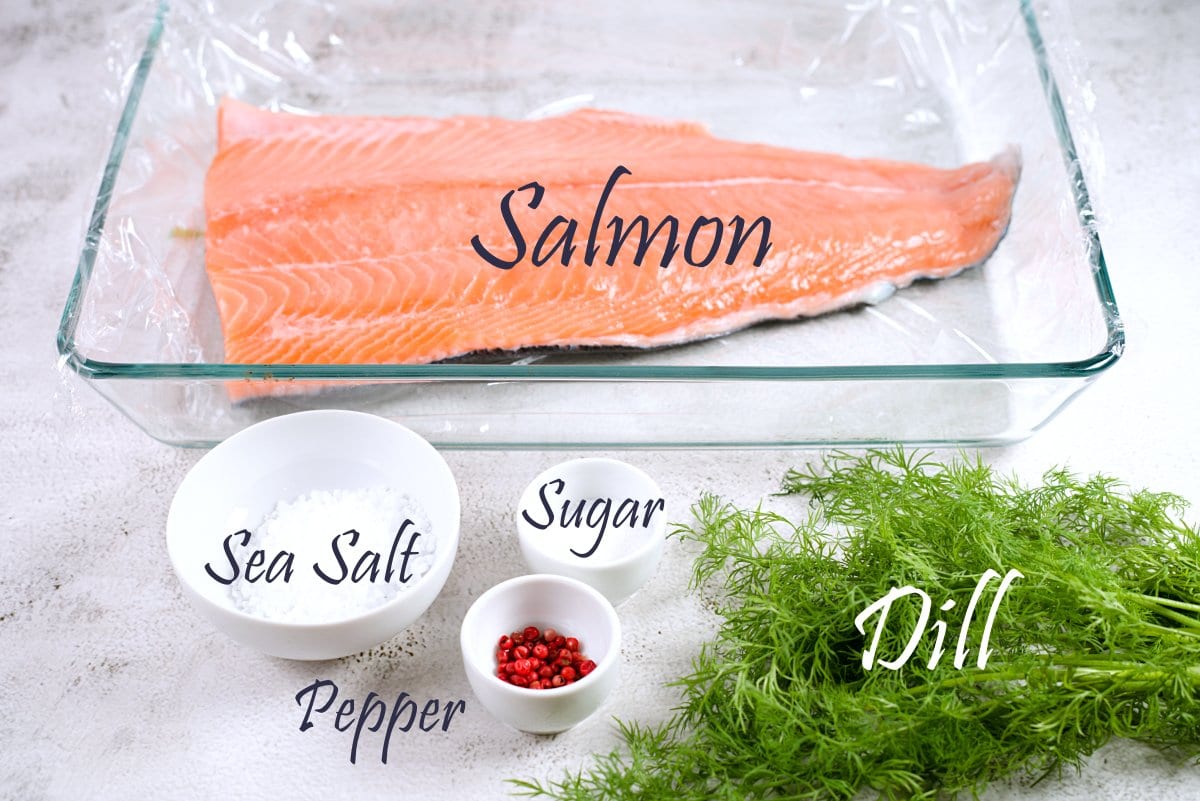
- Salmon
- Coarse sea salt
- Sugar
- Fresh dill
- Pepper
Gravlox can be made from salmon or different types of trouts like rainbow trout. Finns love, especially the rainbow trout, the flesh is a bit firmer and less fatty than salmon.
Lox is made from a D-cut file. This means the salmon fillet has the skin on, but the bones, white abdominal membranes, and fins are removed. You can see a D-cut fillet in the picture above. This is ¼ of a big salmon bought as a whole.
Importance of sugar
When cured with salt, salmon gets quite firm since it loses a lot of liquid. Sugar helps it not to feel as firm on the surface but keep a more soft texture.
What salt to cure salmon with?
Coarse ground sea salt is the traditional one. Mountain salts work great for curing, like Himalayan salt and pink salt.
Use fine ground salt to make cured salmon since it absorbs and melts faster quickly. You can use Iodised salt, but the iodine can form a thin membrane on the surface, especially if you make smoke-cured salmon.
You can use smoked salt if you want a subtle smoky taste without smoking. Depending on the level of smokiness, use the whole amount of smoked salt or half of the amount. You can even use liquid smoke to give a smoke aroma on the surface.
Tip: Use two tablespoons of coarse salt for 2 pounds of salmon
Seasoning of gravlax
Gravlax is seasoned with fresh dill. You can also use dried dill if you don't have some fresh one. Pink pepper is also commonly used for seasoning. The berries' brown seed has some bitter flavor, so the peppercorns husk is best used as flavoring. These give some floral tones; some like it, some don't.
Black pepper can be used as a flavoring and also lemon pepper. See below for more ideas on seasoning.
How to choose a quality fish?
If you choose vacuum-packed salmon, make sure it is not close to the end date to ensure it is fresh.
When buying fresh fish, make sure the gills are red, and the eyes are clear. An old fish has a more slimy surface, and the gills have started to become more grayish; eyes are cloudy. The smell also tells much; a fresh fish has not much of a scent.
You must maintain the cold chain until it is finally prepared for food. Remember to pack a thermal bag when shopping for fish in warm weather.
Instructions
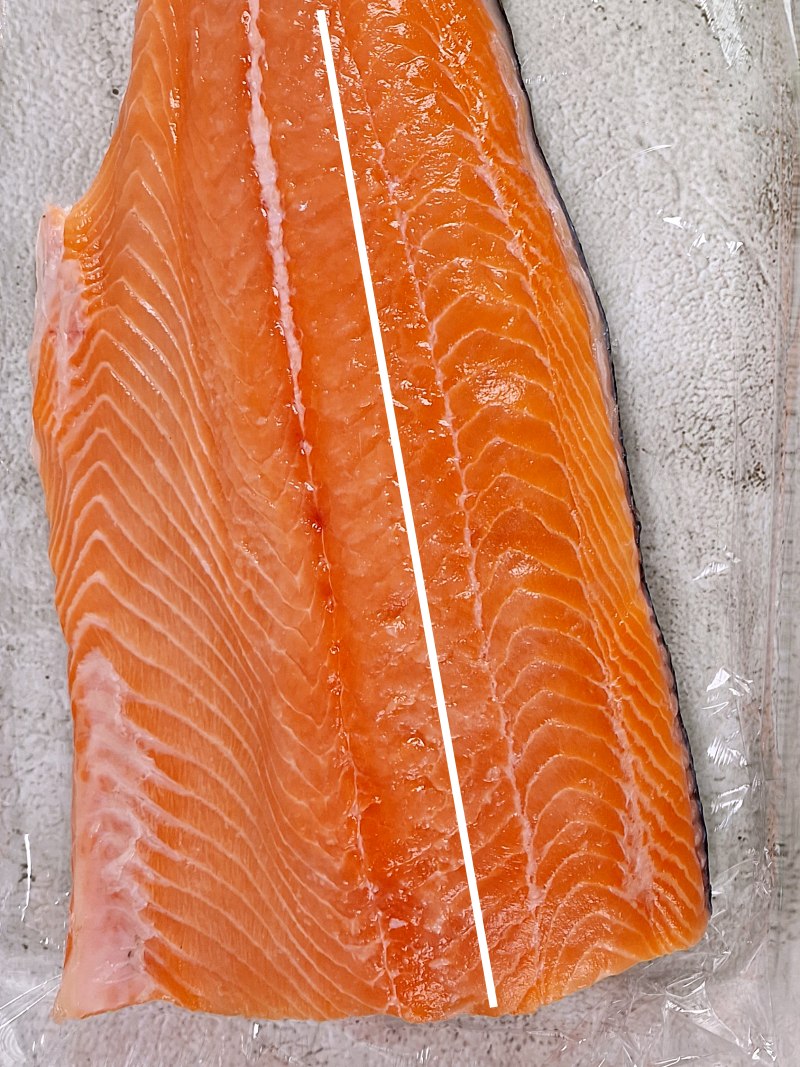
- Rinse your salmon filet in cold water and pat dry. Freeze it for 24 hours minimum. Thaw it in the fridge. Brush with your fingers on top of the file and remove bones if you feel any. Pick the bones out with your fingers or tweezers.
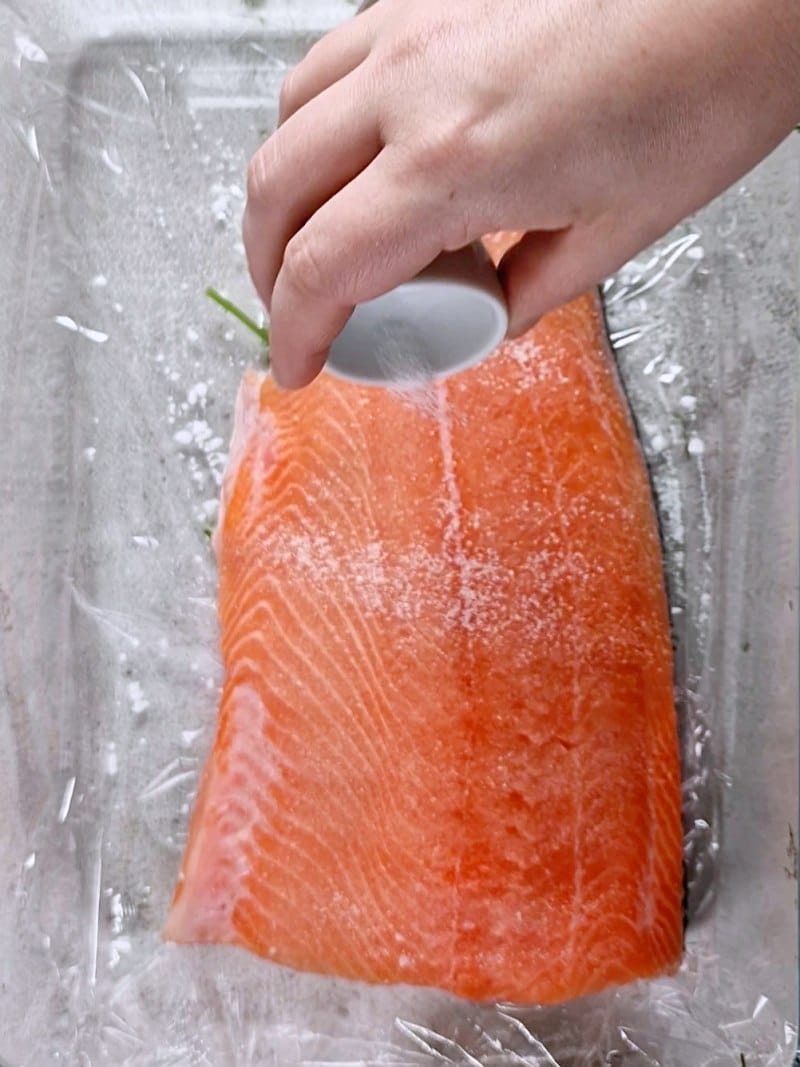
- Put your fish on plastic wrap or aluminum foil. (have it in a form-for ex; a lasagna dish works great) Sprinkle the sugar evenly on top.
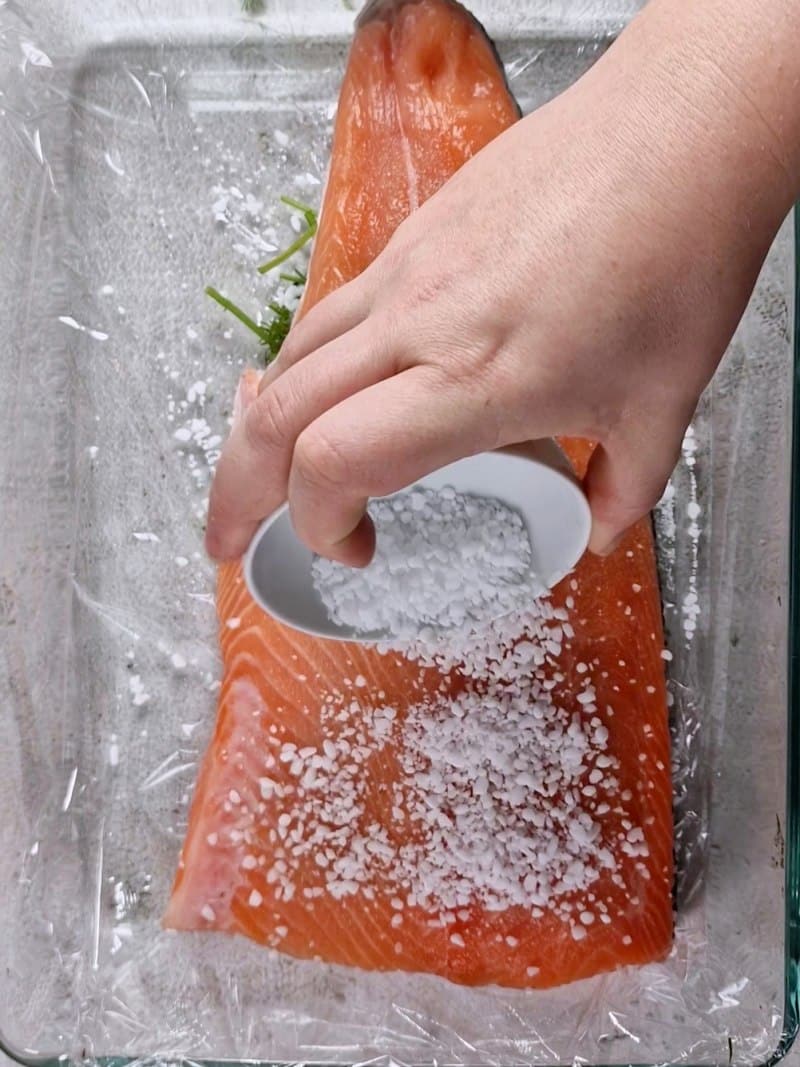
- Add the salt. Put more salt on the thick middle part and more thinly on the thin parts.
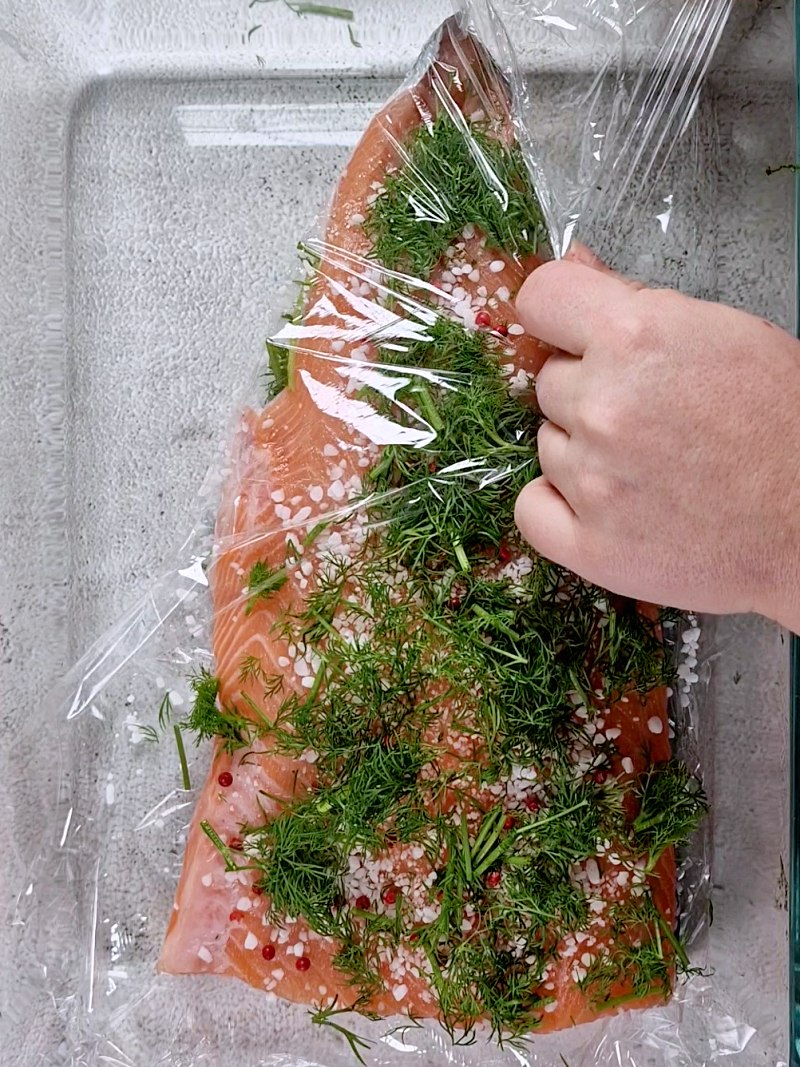
- Add some pepper and chopped fresh dill on the surface if you want to. Pepper can be ground somewhat with a mortar and pestle.
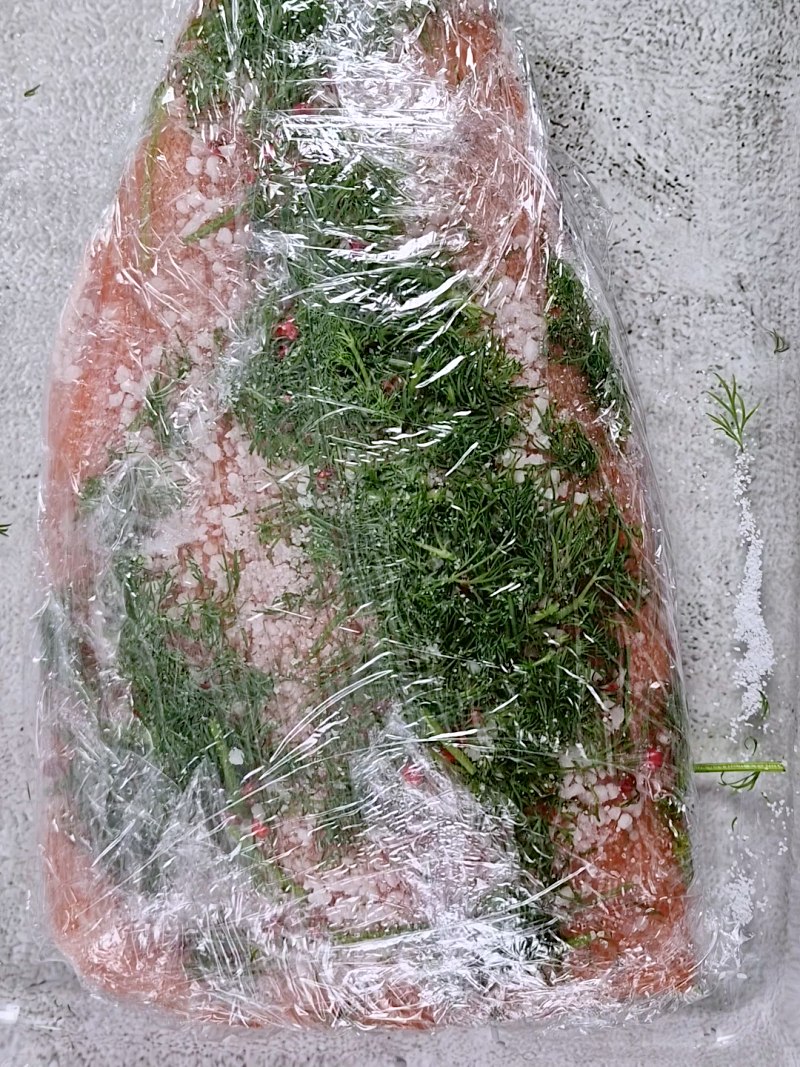
- Wrap the filet tightly in plastic or foil. You can also wrap it in baking paper and then in foil. Let the salmon cure in the fridge for at least a day.
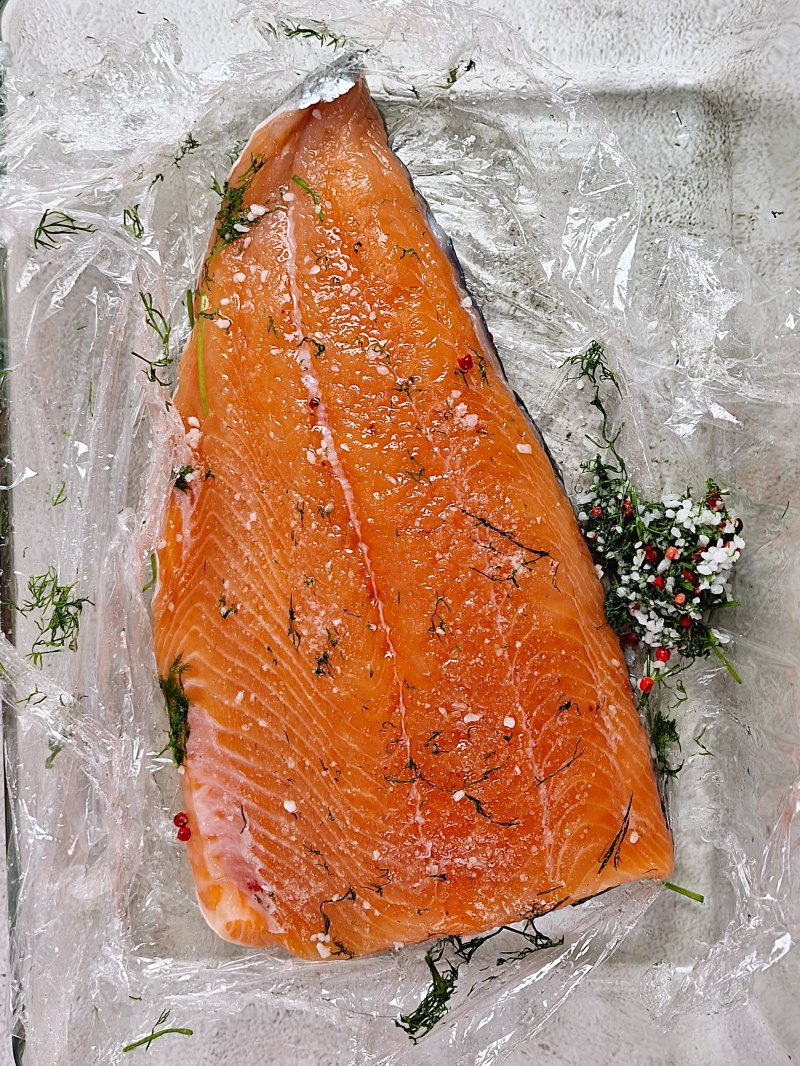
- After curing, wipe away the salt and spices. You can rinse it and pat it dry with a paper towel. Slice the flesh thinly without the skin.
How long to cure your salmon?
Factors such as the fish's thickness and the desired saltiness level affect the curing time. On average, I cure my salmon for 36-48 hours if it is a medium-thick fillet. If you have a thin fillet, you can cure it for 24-36 hours. Very thick fillets need a longer time to cure.
The fillet should feel firm to the touch, and the juices from the flesh should have been extracted.
Do you need to freeze your salmon before curing?
Farmed salmon has a smaller risk for parasites, but you can never be sure. It is securest to freeze your salmon before curing it to avoid parasites, worms, and bacteria. Freeze the salmon for 24 hours in -4 F (-20C) or four days at -0,4F (-18C) before curing it.
Finnish,m Swedish and Norwegian-farmed salmon and rainbow trout have a small risk of worms, so we often use it without freezing. If you are pregnant, remember not to consume raw fish. Raw fish always has a chance of listeria bacteria.
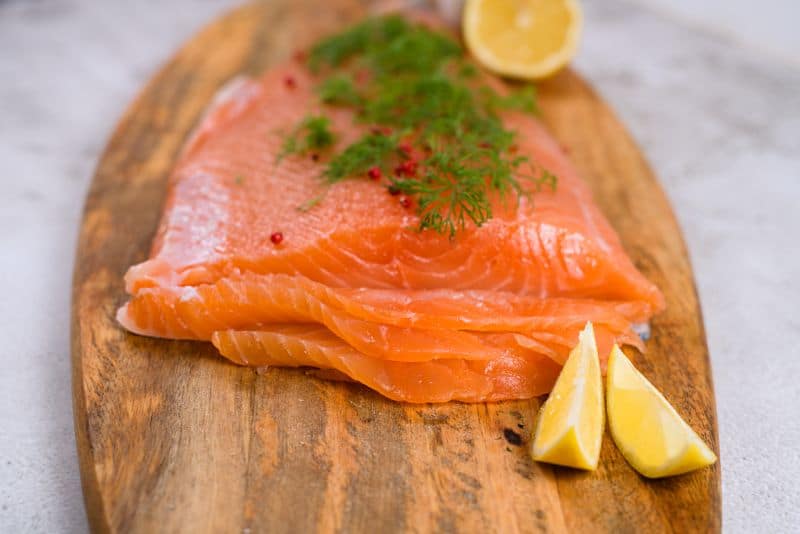
Variations
Cognac cured
Add one tablespoon of cognac to your salmon before adding the salt. Spread it with a brush to get it evenly.
Honey cured salmon
You can use honey instead of sugar on your salmon. Add one teaspoon of honey brush it evenly on the top before adding salt. Warm the honey in the microwave if it is too firm.
Lemon gravlax
You can add sliced lemon to your salmon or add lemon juice on top of the fish. Lemon makes the surface whiter and, so to say, cooks the fish.
Blueberry cured salmon
Adding mashed bilberries on top of your salmon gives a nice purple color to the outer layer, and it looks nice on the cut pieces. The same type of coloration can also be made with beets.
How to serve gravlox?
Gravlax is traditionally served at the Scandinavian Christmas table, but also during summer and different festivities. We eat it just on an average week sometimes since it is so delicious on bread as breakfast or snack.
Cured salmon is a great topping on open-faced sandwiches. It goes especially well with archipelago bread. A great topping with cured salmon is quick pickled cucumber slices. Try it also with easy-made potato flatbreads or rye flatbreads. Of course, this is a great topping for bagels as well.
Gravlax can be served as a main course with boiled potatoes and a sauce. Delicious as cold lunch with a cold potato salad. It is also used to decorate sandwich cakes.- check out this salmon sandwich cake recipe where cured salmon is used as decoration.
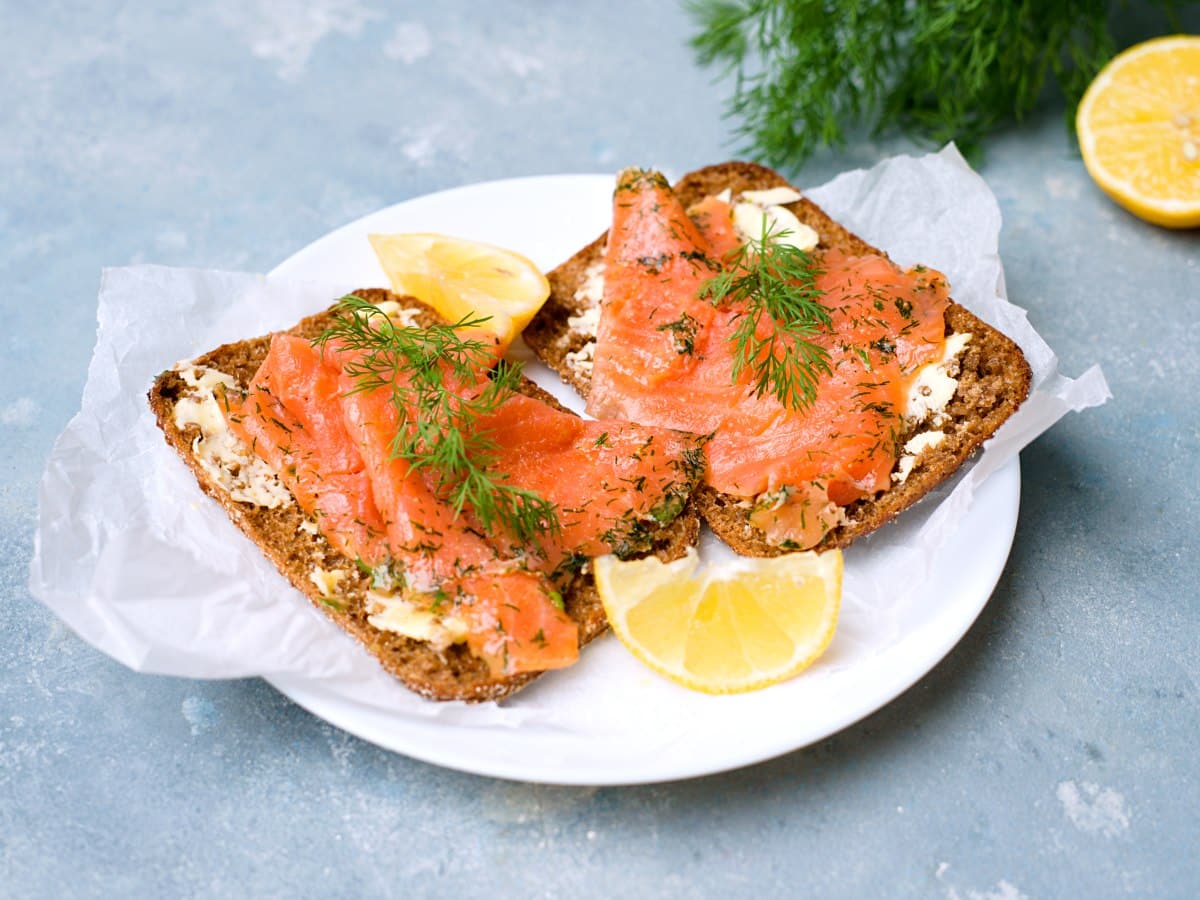
Sauces that go well with gravlax
Hovmästarsås-a Swedish mustard sauce
- ½ cup sweet strong mustard
- 1 tablespoon sugar
- 1 tablespoon salt
- ½ teaspoon white pepper
- 1 tablespoon white wine vinegar
- ½ cup rapeseed oil
- ½ cup finely chopped fresh dill
Mix the mustard, sugar, salt, pepper, and vinegar. Add the oil slowly while whipping the sauce at the same time vigorously. Add the dill as last.
See full recipe for dill-mustard sauce with tips and process photos.
Mustardy yogurt sauce
- ½ cup Turkish or Greek yogurt
- 2 tablespoon sweet mustard
- ½ teaspoon salt
- 1 teaspoon sugar
- ½ teaspoon white or black pepper
- 1 tablespoon lemon juice
- ½ cup finely chopped fresh dill
Mix all ingredients.
Tips and tricks
- Use high-quality salmon. Look for salmon that is fresh, firm, and has a vibrant color. Wild-caught salmon is typically considered to be of higher quality than farmed salmon.
- Make sure to remove any bones from the salmon before curing it.
- Experiment with different spices and herbs to create unique flavor combinations. Even mustard seeds can be used as flavor. Juniper berries also give a very unique flavor profile.
- Don't over-cure the salmon. The curing time will depend on the size and thickness of the fish, but generally, 24-48 hours in the refrigerator should be sufficient.
- Cured salmon can be used in salmon recipes and be cooked. Try, for example, in salmon pasta.
Storage
Store your cured salmon in the fridge in an airtight container. The shelf life of cured salmon depends on how long you cure it. The longer it sits in the salt, the longer it will last stored in the fridge in an airtight container.
If it is only lightly cured, like 12 hours, it lasts for 1-2 days. Medium-cured lasts 2-3 days, and hard-cured (72 hours) lasts up to 5 days in the fridge.
Frequently asked questions
Yes, you can cook the cured salmon in the oven or fry it on a pan.
You can store your lox in the fridge for five days. The refrigerator should be under 40 degrees F (4C)
You can freeze your salmon if it has not been frozen before curing. It stores only three months in the fridge since it is so fatty.

Gravlox-Cured salmon
Ingredients
- 800 grams salmon fillet (1,8 pounds)
- 2 tablespoon coarse salt, seasalt, or mountain salt
- 1 teaspoon sugar
- 1 teaspoon pink pepper. (optional)
- ½ cup chopped fresh dill
Instructions
- Rinse your fillet in cold water and pat dry. Freeze it for 24 hours minimum. Thaw it in the fridge.
- Brush with your fingers on top of the fillet and remove bones if you feel any. Pick the bones out with your fingers or with a tweezer.
- Put your salmon in a dish covered with plastic wrap or aluminum foil.
- Sprinkle the sugar evenly on top. Add the salt. Put heavier with salt on the thick middle part and less on the thin parts.
- Add some pepper and chopped fresh dill on the surface if you want to. Pepper can be ground somewhat with a mortar and pestle.
- Wrap the fillet tightly in the plastic foil.
- Let the salmon cure in the fridge for at least a day. 36-48 hours is the average.
- After curing, wipe away the salt and spices. You can rinse it and pat it dry with a paper towel. Slice the flesh thinly with a sharp knife (without the skin).
Video
Notes
- Lightly cured, (12-18 hours), lasts in the fridge for 1-2 days.
- Medium cured (36 hours), 2-3 days
- Hard cured (72 hours) lasts for up to 5 days in the fridge.




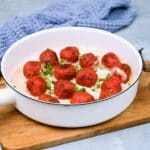



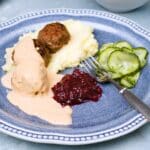

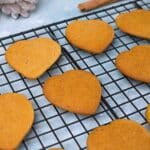
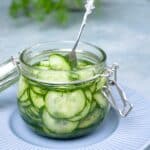








Leave a Reply